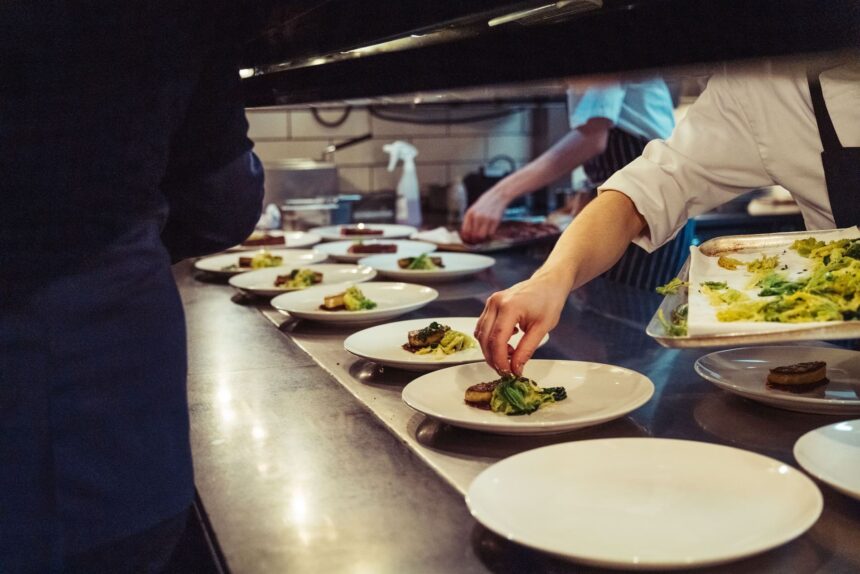Over the past five years, the UK foodservice industry has undoubtedly faced challenges. From coronavirus lockdowns to economic recessions, as well as changing consumer dietary trends; restaurants, cafes, and takeaways have had to continually adapt to changing circumstances and demands. Despite financial pressures and fluctuating tastes, the foodservice industry in the UK has recovered well. In 2019, Mintel reported that 89% of consumers ate out at some point during the year, this increased to 90% in 2024. In the intervening years, eating-out participation in the UK dipped as low as 81%, so this is an industry recovery to be celebrated. But how have restaurants, takeaways, and food outlets managed this recovery? Join Mintel as we explore the latest foodservice industry trends and innovations.
Consumer Trends in the Restaurant Industry
The foodservice industry is varied, with casual dining, luxury experiences, fast food, as well as local fare and exotic cuisines. With so much to choose from, where do consumer tastes sit in the UK? The most popular food outlet type in the UK is pub restaurants, followed by British restaurants and cafes. This tells us that casual, lowkey dining is the preference for most consumers in the UK.
Across most types of cuisines, including European, Italian, American, and seafood restaurants, dining in is far more popular than a takeaway. In no case is this so stark as pub restaurants, for which there is a disparity of more than 60% in consumers eating in and taking away. The only exception to this is ethnic restaurants, including Chinese and Indian restaurants, which are visited more commonly for takeaways.
Looking at how consumers of different ages behave differently, one of the distinct examples of generational difference is ordering takeaways. For consumers aged 65+, takeaway orders are almost exclusively confined to more traditional options like Chinese restaurants, Indian restaurants, and fish & chips. For younger consumers, however, ordering takeaways can take more diverse forms – speaking to the greater variety of options now available, thanks in part to the rapid growth of businesses like Uber Eats and Deliveroo. For example, consumers aged 20-24 are more than four times more likely to order takeaway from a burger/chicken restaurant than consumers aged 65 and over.
In addition, across all takeaway cuisines, consumers aged 16-24 are typically the age group most likely to order. What this tells us is that interest in takeaway cuisine is not specific to certain cuisines for young people compared to how it is for older consumers.
How Consumers Choose Where to Eat
Mintel’s research has uncovered that the primary driver to visiting a food outlet is perhaps the simplest – recommendations from family and friends. Plenty of us still turn to online reviews for trustworthy feedback, as well as taking advantage of loyalty schemes and valuing environmentally friendly initiatives. However, the vast majority of consumers in the UK cited personal recommendations as the motivation behind specific restaurant visits.
What does this mean for businesses? Simply, it means that the dining experience is the most important thing. With word-of-mouth marketing, the fundamentals of dining have to be right, such as good food, great service, and reasonable prices. This means that in times when consumers are going back to basics in searching for where to eat out, businesses should make sure their basic services are taken care of.
Visit Mintel Store for more Foodservice Insights
Emerging Trends in the Eating-Out Market
What are the latest trending items appearing on menus in restaurants and cafes in 2024? A major trend over the last couple of years has been the enormous rise of breakfast and brunch dinning experiences. In 2021, Mintel reported that only 29% of consumers ate breakfast or brunch out. In 2023, breakfast and brunch dining has jumped to 35%, a significant increase. With unchanging levels of consumers dining out for lunch, dinner, and snacks, it seems that diners are choosing to expand their habits rather than alter them.
When diving deeper into consumer behaviour when dining out, our data revealed that there is an even split between those who enjoy trying new flavours and those who prefer the comfort of familiar dishes. This signals that the two prevailing trends in what consumers like to eat are polarised – foods they know and love, and foods they have never tried.
For those who do like to try something new, the majority of people think that higher prices for complicated dishes are justified. So, most people who eat out in the UK are happy to pay for unusual menu items that they could not make at home. It seems that the cost of eating out vs cooking at home is justified for most consumers, who see the value in more complex cooking. Meanwhile, regarding how much consumers are willing to pay, most consumers, especially young people, think that meatless dishes should cost less.
Innovations in the Foodservice Industry
A key innovation over the last few years in the foodservice industry is the enforced addition of calorie information to menus for large companies. Following legislation passed in April 2022, large foodservice businesses are obliged to disclose the calorie information of dishes on their menus. In 2019, more than half of UK consumers said that this would be a move which could encourage consumers to eat more healthily. In 2024, half of under-35s said that they would be pleased to see more nutritional information on menus. We can see that this legislated change has pushed a change in the culture which businesses should take into account.
As in many industries, technology is the key site of innovation for foodservice. Whether this be QR code ordering, which has become increasingly prominent since the coronavirus pandemic; touch screen ordering at fast food restaurants; or in-app loyalty schemes and deals. These options encourage consumers to try new locations and menu items at a time when familiarity is trending, businesses can use technology to create novel experiences that attract consumers.
Looking Ahead with Mintel
For restaurants, cafes, takeaways, and other food outlets, following these consumer trends can be crucial. Although businesses should be wary of diving headfirst with trends that may not stand the test of time, restaurant offerings must reflect consumer desires and restaurant industry trends.
For many restaurants, this could mean incorporating a breakfast or brunch menu into their service. With brunch on the rise as a dining-out option, and cafes and coffee shops growing rapidly thanks to their diverse morning-midday options, breakfast dining is a key opportunity that many food outlets can capitalise on.
For takeaway food outlets and restaurants offering a takeaway option, it would be sensible to focus on younger consumers who are more open to variety and innovation. Older consumers prefer traditional takeaway options and methods, whereas young people have embraced food delivery technology and alternative dining-out options. Offering the dining out experience with the added convenience of staying in, we expect the takeaway industry to continue to expand and diversify.
Align with the latest trends in consumer behaviour by exploring our extensive Foodservice Market Research today.
Subscribe to our newsletter, Spotlight, to get free content and insights delivered directly to your inbox.
Sign up to Spotlight







